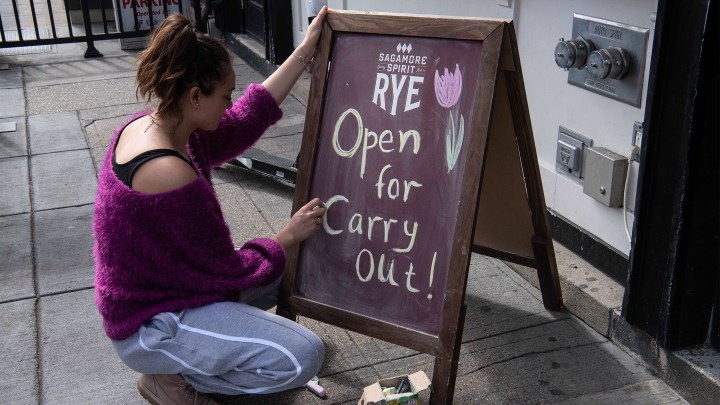
Dine-in restaurants see takeout success as a recipe for the future
Dine-in restaurants see takeout success as a recipe for the future

Restaurants around the country have had to change their business models because of COVID-19. The pandemic has forced some out of business; but others are trying to adapt with different models.
The owners of one high-end restaurant in Berkeley, California, called Comal, have opened a new restaurant in Oakland during the pandemic as a takeout operation.
Restaurant workers at the new operation, Comal Next Door, in Oakland’s Grand Lake neighborhood, shuttled brown-bagged orders from the kitchen to several rows of holding racks on the eatery’s first Friday night. The bags were destined for pickup customers waiting outside and a stream of double-parked delivery drivers.
Co-owner John Paluska is upbeat. But that wasn’t the case just a few months ago, when the Bay Area began its COVID-19-related shutdown.
“When this whole thing hit, we were just about ready to open as a regular, old restaurant. … The initial response was, ‘Oh, my God, this is a disaster,'” Paluska said.
Paluska already owned two side-by-side restaurants in Berkeley: the more upscale, dine-in Comal, which offered plates for two to three people to share for up to $56, and a more casual cantina offering takeout. And those less-expensive takeout offerings — burritos, bowls and tacos, and a few dine-in favorites — started flying out the door. In fact, the cantina, also called Comal Next Door, recently had its best day ever.
“We’re actually over 100% of our historical high-water marks,” Paluska said.
Paluska is using the same approach for the new restaurant in Oakland and can’t see changing it anytime soon, even once indoor eating is allowed. Now, refrigerators and shelving racks have taken over the original Comal’s former dining rooms.
“And we’re having enough success with this where we feel like we were just looking at this, like, we just want to ride this out until we’re on the other side of the pandemic. And I think it’s gonna be a long time,” he said.
As the pandemic continues, he wants to protect the health of his staff. After having laid off all of his employees early on, Paluska’s been able to hire about half back, thanks to a Paycheck Protection Program loan.
Jot Condie, president of the California Restaurant Association, said pickup is the new dine in, “where you have talented chefs creating what used to be food served on a white tablecloth putting out quality food in a sort of grab-and-go type of setting and are sort of meeting the demand of the customers as they’re evolving.”
Condie estimates that about a third of California eateries won’t survive the pandemic, and he predicts the overall restaurant failure rate will be even worse, up to 50%, in urban areas that rely on tourists, like San Francisco.
So the city is looking at other models for the future.
“We have an economic recovery playbook that we built,” said Jay Cheng, with San Francisco’s Chamber of Commerce. “And commissary kitchens, like shared kitchens, and helping restaurants pivot to takeout and delivery is our top priority. It’s like what we think is the future of the restaurant industry. It has to be.”
Cheng said restaurants that can shift their operations won’t necessarily be raking in the cash, as takeout margins can be thin, but they might be able to survive.
Back in Oakland, longtime Comal customer Dave Collins is picking up his takeout order from the newest spinoff restaurant.
“I got a veggie bowl and a carnitas bowl. We’re going to share it. And a giant cocktail,” he said.
That’s right, a giant cocktail — to go.
There’s a lot happening in the world. Through it all, Marketplace is here for you.
You rely on Marketplace to break down the world’s events and tell you how it affects you in a fact-based, approachable way. We rely on your financial support to keep making that possible.
Your donation today powers the independent journalism that you rely on. For just $5/month, you can help sustain Marketplace so we can keep reporting on the things that matter to you.


















